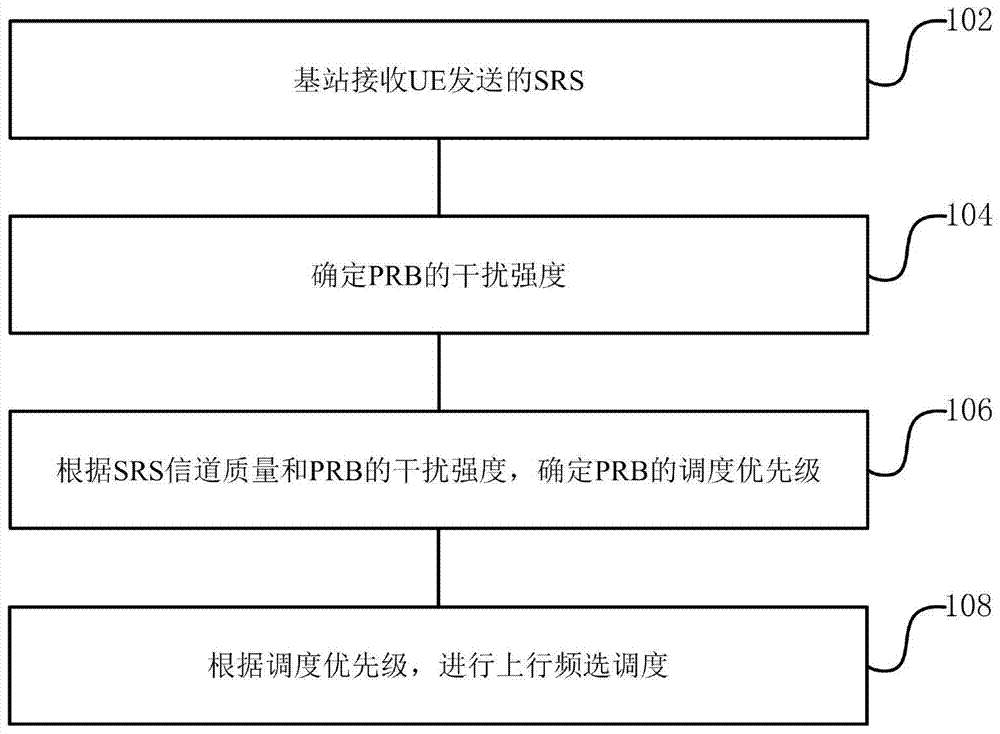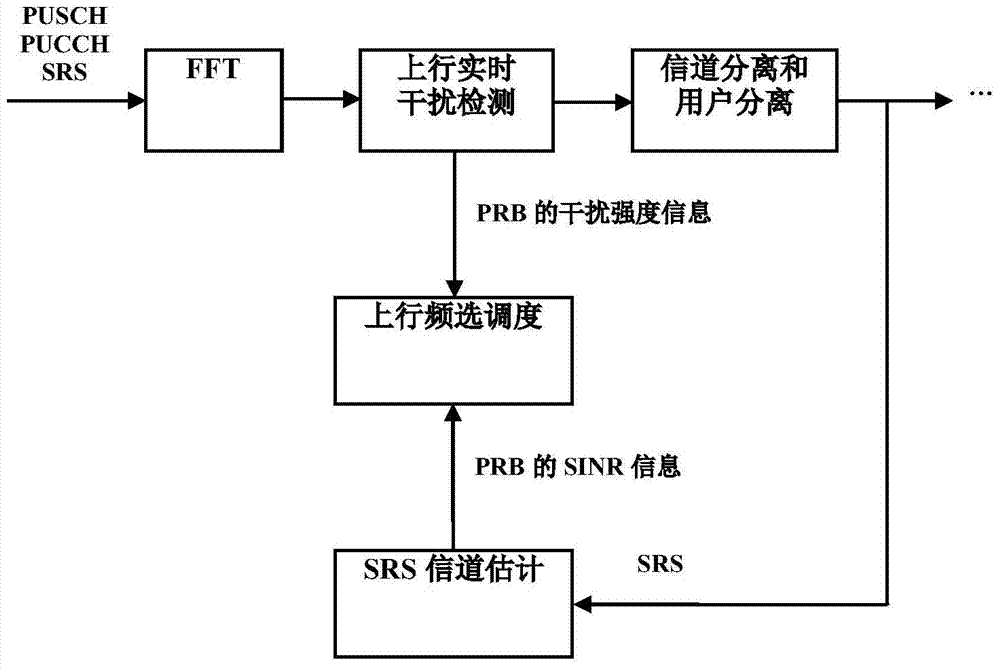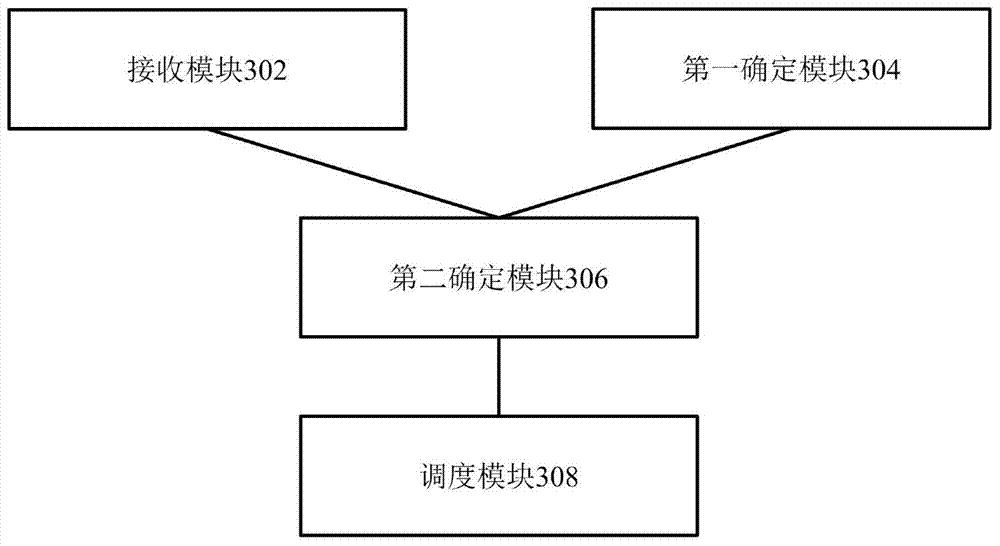Uplink frequency selection scheduling method and device
A frequency selection scheduling and scheduling priority technology, applied in the field of communication, can solve the problems of not reflecting narrowband interference, not being able to suppress narrowband interference of different systems, and not being able to solve the interference of different systems, so as to achieve the effect of improving uplink performance
- Summary
- Abstract
- Description
- Claims
- Application Information
AI Technical Summary
Problems solved by technology
Method used
Image
Examples
Embodiment 1
[0039] refer to figure 1 , showing an uplink frequency selection scheduling method in this application, including:
[0040] Step 102, the base station receives the SRS sent by the UE; the base station may be a TD-LTE base station.
[0041] Step 104, determining the interference strength of the PRB;
[0042] During specific implementation, the interference strength of the PRB may be calculated according to the average power of the PRB and the average power of the PRB in the full bandwidth.
[0043] In a preferred example of the present invention, it is also possible to first identify which PRBs are the interfered PRBs, and then calculate the interference intensity of the interfered PRBs according to the average power of the interfered PRBs and the average power of the PRBs in the full bandwidth; The interference strength of the interfered PRB is regarded as 0. Through this embodiment, the calculation process of the interference intensity of the PRBs that are not interfered i...
Embodiment 2
[0055] The embodiment of the present invention also provides an uplink frequency selective scheduling method, which can be applied to a base station of F-band TD-LTE, for example, an F-band TD-LTE evolved node B (eNodeB). In this method, the uplink baseband processing module in the base station performs real-time interference detection based on narrowband interference characteristics in the full bandwidth of the frequency domain, identifies narrowband interference and interfered PRBs, and calculates the interference intensity information of the interfered PRBs. Then, the uplink scheduling module in the base station performs uplink frequency selection scheduling based on the SRS channel quality information and the interference intensity information of the interfered PRB. figure 2 is a schematic diagram of an uplink frequency selection scheduling method according to Embodiment 2 of the present invention, combined below figure 2 The flow of this embodiment will be specifically ...
Embodiment 3
[0067] The embodiment of the present invention also provides an uplink frequency selection and scheduling device, which can be used to implement the above method. Therefore, the features in the above method embodiments can be applied to this embodiment. The device may be a base station, or a part of the base station. image 3 is a structural block diagram of an uplink frequency selection scheduling device according to Embodiment 3 of the present invention, as shown in image 3 As shown, the device includes:
[0068] The receiving module 302 is configured to receive the SRS sent by the UE;
[0069] The first determination module 304 is configured to determine the interference strength of the PRB;
[0070] The second determination module 306 is configured to determine the scheduling priority of the PRB according to the SRS channel quality and the interference intensity of the interfered PRB;
[0071] The scheduling module 308 is configured to perform uplink frequency selectiv...
PUM
 Login to View More
Login to View More Abstract
Description
Claims
Application Information
 Login to View More
Login to View More - R&D
- Intellectual Property
- Life Sciences
- Materials
- Tech Scout
- Unparalleled Data Quality
- Higher Quality Content
- 60% Fewer Hallucinations
Browse by: Latest US Patents, China's latest patents, Technical Efficacy Thesaurus, Application Domain, Technology Topic, Popular Technical Reports.
© 2025 PatSnap. All rights reserved.Legal|Privacy policy|Modern Slavery Act Transparency Statement|Sitemap|About US| Contact US: help@patsnap.com



